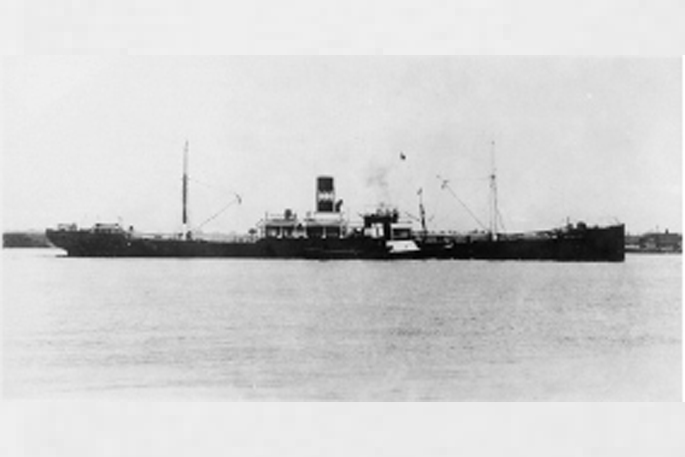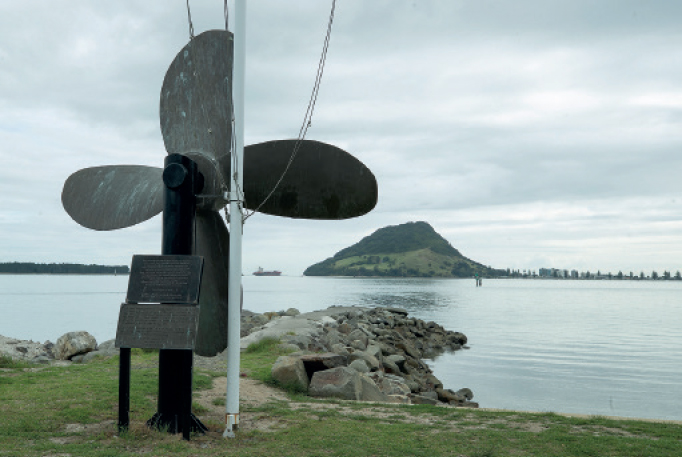The story of the Mystery Ships is one of the romances of the Great War and will for ever be of historical importance for the Royal Navy.
The supreme bravery shown by those involved was of the highest possible level and the role played in slowing the destruction and havoc the U boats were causing makes compelling reading.
Vice Admiral Gordon Campbell wrote of the ideas and technological developments that were produced in a short period of time due to the war.
“In practically every case such ideas were born when one or another of the combatant nations was confronted by some direct threat to her safety. The tank, for example appeared as a reply to barbed wire and the machine gun. In like manner, the menace of the submarine called forth the “mystery” or “Q ship.”
The ships were fitted out as a decoy by concealing guns on board what appeared to be an ordinary steamer. The guns were placed in a specially-built house erected on the stern and looked like a steering engine house. A string was pulled and the house would collapse and out came the gun.
As well, the main deck on either side was cut and fitted with hinges which could quickly fall down to disclosing guns.
The upper deck was often converted into gun houses which could quickly collapse with guns also called into action.
There were other disguises, generally either side of the bridge which could quickly collapse when needed to add to the firepower. There was at times a telescopic mast and derricks stowed in different positions with fake cargo moved to different positions on the deck.
Deceiving appearance
There was some initial success with armed fishing trawlers working in conjunction with submarines against the U Boats (June 1914 U-14 was rammed and ultimately sunk).
The efficiency of the crew was paramount. This was complicated somewhat as they were often composed of men from the various reserves, fishermen and others that could be recruited with often only two naval officers.
They had to be relied upon even in the most dangerous circumstances which often meant they were being watched by a submarine commander.
As the outward appearance of the ship had to resemble a merchant ship, the crew had to appear in plain clothes and maintain activity similar to those crewing a merchant ship.
As all kinds of ships were used, including liners, some of the crew dressed as women from the waist up so viewed above the deck they created the right impression from a periscope.
The mystery ship also had to change the external appearance as if a submarine commander saw a ship operating in the same vicinity for several days he may become suspicious of her.
For this reason dummy funnels, dummy masts, derricks and boats and paints were used to change the appearance overnight.
To maintain the appearance the ships often had one or two off-duty crew smoking their pipes with the remainder ready and closed up with the guns waiting, or below deck ready to run through concealed passages to their guns without being seen.
An attack from a submarine often involved a torpedo or a warning shot across the bow after the submarine surfaced and the conning tower opened and the gun fired then an order to stop was often given.
However the submarine on the surface was very vulnerable to return fire from the Q ship. The submarine commander often had limited torpedoes at his disposal so he would use them sparingly.
The pre-arranged routine often involved steam being dispersed and a “panic party” of men who filled boats pretending the ship to be abandoned.
At times dried seaweed was set fire to which often deceived the U Boat commander.
This tactic was used to appear as if the Q ship was endeavouring to achieve top speed when in reality it had slowed.
Targeting submarines
The submarine commander would regularly be eager to reap the spoils of war with fresh supplies being often targeted and the captain detained for questioning so would approach the ship and generally be a sitting target.
The white ensign was broken at the mast head in compliance with the Hague Convention, and the side covers of the guns came down as the gun fire started. At times the submarine would submerge if they could but the mystery ship also had depth charges to add to their arsenal.
At times the commander would order by signal for the papers to be sent over so a set arrangement was rehearsed for this scenario as well which involved the second in command taking responsibility for all decisions.
The U boat commanders required the masters of vessels to hand over their documentation as proof of success for their high command and for intelligence purposes.
There were instances of submarines escaping to spread the warning of the ships and their disguise which made the work of the mystery ships increasingly difficult.
Consequently the ship’s captain sometimes took the decision to get deliberately torpedoed first.
Orders were given to increase or decrease speed to ensure a torpedo hit. The strain on the crew was incredible especially for those below deck knowing they were to be deliberately torpedoed especially if the ammunitions hold was hit.
The steam and pre planned behaviours worked well and the proud commander regularly surfaced close by facing the shock of the fire power he received.
At times the submarine was so close that the big guns could not depress enough to open fire so the ship’s captain had to wait for a better opportunity. The courage of all and stress of being suspiciously viewed at such close proximity has to be admired especially if the U Boat circled the Q ship several times closely observing all actions.
After being hit maintaining normal behaviour for such a situation must have been incredibly difficult especially if the ship was likely to sink and some crew were killed.

HMS Baralong, also known as HMS Wyandra[4] was a Royal Navy warship that was active during World War I.
At times the disguises were adversely affected with the explosion further complicating the awkward situation and the identity prematurely being disclosed.
There were times when the gunfire was at a greater range than desired which was not the ideal situation for the merchant ship.
I believe the ships were then towed to a venue so the armaments could be saved or they were rescued if possible by fellow sailors. Following this another ship was then fitted out.
With a colossal amount of merchant ships being sunk by U boats, news of successes were jubilantly received on the home front.
As the war progressed submarines were fitted with big guns which they preferred to use rather than torpedoes which had a range near 5,000 yards.
There were times after being hit that the mystery ship could not sight the submarine due to the smoke so the wait until the enemy were close enough to open fire was required.
At times the fires were dangerously close to explosives and the disguised guns and crew but the crew appreciated the importance of maintaining their cover so remained at their stations, some making the ultimate sacrifice for their bravery.
With the incredible bravery being shown there were instances of the VC being awarded. Naval protocol of the time meant one officer and one crew could receive this prestigious award and with all officers and men being equally deserving a secret ballot was often held. Many of the crews were given gallantry awards, some posthumously.
His majesty the King stated in making an award: “Greater bravery than was shown by all officers and men on this occasion can hardly be conceived”.
It was impossible to determine how many merchant ships were spared out of fear that the target may have been a Q ship.
Postscript from the author
I personally believe that the merchant navy’s contribution to the war effort has been somewhat under estimated without the recognition they deserve being forthcoming.
The phenomenal loss of life and the continual possibility of being sunk en-route while delivering much needed supplies and personnel must have been a massive strain for all. It would be fitting for ANZAC services to make mention of the merchant seamens’ massive contribution.



0 Comments
Leave a Comment